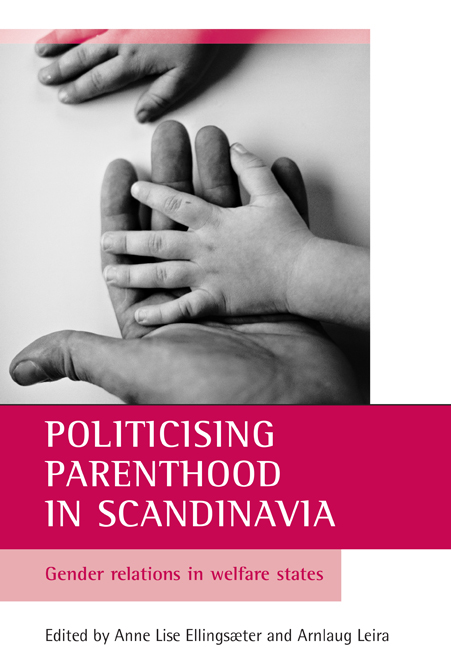Book contents
- Frontmatter
- Contents
- List of boxes, figures and tables
- Acknowledgements
- List of contributors
- one Introduction: politicising parenthood in Scandinavia
- Part One Politicising parenthood – legacies and challenges
- Part Two Gender equality and parental choice in welfare state redesign
- Part Three Work, family and the welfare state: redefining family models
- Index
nine - Working time and caring strategies: parenthood in different welfare states
Published online by Cambridge University Press: 15 January 2022
- Frontmatter
- Contents
- List of boxes, figures and tables
- Acknowledgements
- List of contributors
- one Introduction: politicising parenthood in Scandinavia
- Part One Politicising parenthood – legacies and challenges
- Part Two Gender equality and parental choice in welfare state redesign
- Part Three Work, family and the welfare state: redefining family models
- Index
Summary
Introduction
The aims of this chapter are to examine how parents manage their work and caring obligations, to identify which working and caring arrangements help parents balance their obligations, and how parents’ strategies are influenced by welfare state policies. Of particular interest is the impact of flexible working time as well as different types of care policies in creating a more gender-balanced division of labour in families. It is widely recognised that mothers’ involvement in employment and their caring obligations differ strongly, depending on norms and values as well as the profile of family and caring policies in different welfare states (Millar and Warman, 1996; Gornick et al, 1997; Leira, 2002; Brannen et al, 2004). Thus in order to understand mothers’, and fathers’, work and care practices it is necessary to examine gender-specific norms embedded in social structures and in women's and men's decisions related to employment and family.
Most of the literature dealing with the interface between work and family focuses on the state–labour market relationship and on how to integrate women into paid labour (Lewis 1992, 2002; Esping-Andersen, 1990, 1999; Lister, 2002). The weakness of the state–labour market approach, however, is that it primarily describes women's socioeconomic position and the impact of the welfare state policies on their employment conditions. It fails to explain why the gendered division of paid and unpaid work has been so persistent in all European countries (Ellingsæter, 1998; Pfau-Effinger, 1998). This chapter compares mothers’ and fathers’ participation in paid work and in care, and the work–family conflict they experience, in four countries, the two Nordic countries Denmark and Sweden, the Netherlands and the UK. The four countries represent three different social structures concerning norms and values for parenthood as well as in the profile of family and caring policies in Northern Europe (Perron et al, 1998; Esping-Andersen, 1990, 1999; Gallie and Paugam, 2000). Denmark and Sweden represent the Nordic welfare model. Both countries score high on equal opportunities and are characterised by working-time regimes with few disincentives against gender equality, and an active policy on reconciling work and family is pursued. However, there is also considerable variation among the countries, and within the countries among different groups of families
- Type
- Chapter
- Information
- Politicising Parenthood in ScandinaviaGender Relations in Welfare States, pp. 195 - 216Publisher: Bristol University PressPrint publication year: 2006
- 1
- Cited by



